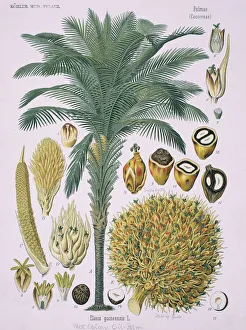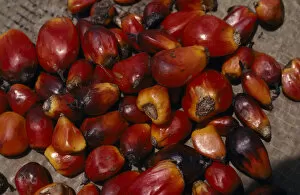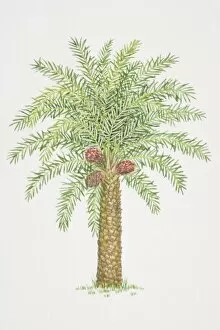Elaeis Guineensis Collection
Elaeis guineensis Jacq. , commonly known as the African oil palm, is a species of palm tree that holds great significance in various industries
All Professionally Made to Order for Quick Shipping
Elaeis guineensis Jacq. , commonly known as the African oil palm, is a species of palm tree that holds great significance in various industries. With its distinctive brown subject and towering presence, this oil palm stands tall as an emblem of agricultural prosperity. The African oil palm, Elaeis guineensis, has been cultivated for centuries due to its valuable fruits. These fruits are harvested to extract high-quality palm oil, which serves as a vital ingredient in numerous products we use daily. From cooking oils to cosmetics and even biofuels, the versatility of this plant knows no bounds. In addition to its economic importance, the African Oil Palm tree plays a crucial role in environmental conservation. Its extensive root system helps prevent soil erosion and contributes to maintaining ecological balance. Illustrated depictions showcase the intricate network of roots that anchor these majestic trees firmly into the ground. As we admire the beauty of Elaeis guineensis, it's impossible not to notice how it harmoniously coexists with other flora such as Cola cordifolia or Superb Terminalia trees. This symbiotic relationship fosters biodiversity within their shared habitat. Furthermore, mature individuals can be seen posing proudly beside clusters of vibrant oil palm fruits. These luscious orbs symbolize abundance and serve as a testament to nature's generosity. Let us appreciate the magnificence – an iconic species that not only provides livelihoods but also reminds us of our responsibility towards sustainable practices.










